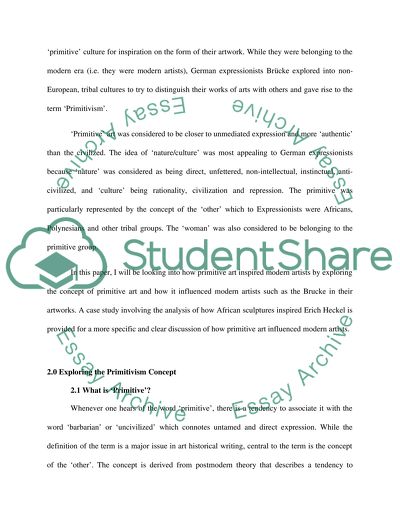Cite this document
(“Primitivism in Modern Art Essay Example | Topics and Well Written Essays - 2750 words”, n.d.)
Retrieved from https://studentshare.org/visual-arts-film-studies/1529412-primitivism-in-modern-art
Retrieved from https://studentshare.org/visual-arts-film-studies/1529412-primitivism-in-modern-art
(Primitivism in Modern Art Essay Example | Topics and Well Written Essays - 2750 Words)
https://studentshare.org/visual-arts-film-studies/1529412-primitivism-in-modern-art.
https://studentshare.org/visual-arts-film-studies/1529412-primitivism-in-modern-art.
“Primitivism in Modern Art Essay Example | Topics and Well Written Essays - 2750 Words”, n.d. https://studentshare.org/visual-arts-film-studies/1529412-primitivism-in-modern-art.


